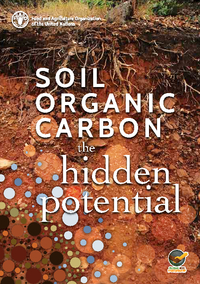Climate impacts in northern forests
Northern forests hold around 54% of the world’s total terrestrial carbon stock and contribute more than one-third to our global terrestrial carbon sink. This report reviews the impact of human induced
Northern forests hold around 54% of the world’s total terrestrial carbon stock and contribute more than one-third to our global terrestrial carbon sink. This report reviews the impact of human induced
<p>Growth in terrestrial gross primary production (GPP)—the amount of carbon dioxide that is ‘fixed’ into organic material through the photosynthesis of land plants—may provide

This publication provides an overview to decision-makers and practitioners of the main scientific facts and information regarding the current knowledge and knowledge gaps on Soil Organic Carbon. It highlights
Question raised in Rajya Sabha on Eco-friendly approach for fulfillment of the Paris Climate Change Agreement, 20/03/2017. India ratified the Paris Agreement to the United Nations Framework Convention
The peatlands, which weren’t even known to exist as recently as five years ago, were revealed to cover 145,500 square kilometres (or more than 17,500 square miles), an area larger than England, and to
The ocean is the largest sink for anthropogenic carbon dioxide (CO2), having absorbed roughly 40 per cent of CO2 emissions since the beginning of the industrial era. Recent data show that oceanic CO2 uptake
<p>This recently released NASA simulation of the global atmospheric carbon dioxide (CO2) cycle offers a powerful counterpoint to the Trump team’s push to marginalize climate change research. The visualization conveys the message that rising concentration of atmospheric carbon dioxide on Earth will produce thermostat-like effects. It also seeks answers to questions such as how land and ocean absorbs the greenhouse gas and what will happen when it reaches a point of saturation. It shows 50 percent of human-made emissions staying in the atmosphere, while 25 percent goes to the oceans with the other 25 percent being absorbed by land vegetation.</p>
The Department-related Parliamentary Standing Committee on Science & Technology, Environment & Forests, present this Two Hundred and Ninety-third Report on “Forest Fires and its Effect on Environment,
<p>Unlike CO2, atmospheric methane concentrations are rising faster than at any time in the past two decades and, since 2014, are now approaching the most greenhouse-gas-intensive scenarios. The reasons
2015 saw a historic double success for sustainability and climate policy. The 2030 Agenda for Sustainable Development, with its Sustainable Development Goals (SDGs), and the Paris Agreement on climate
The 85-member consortium has met annually since it was first launched in 2002 by then-US Secretary of State Colin Powell. Congo Basin forests hold more than 25 billion tons of carbon and thousands of